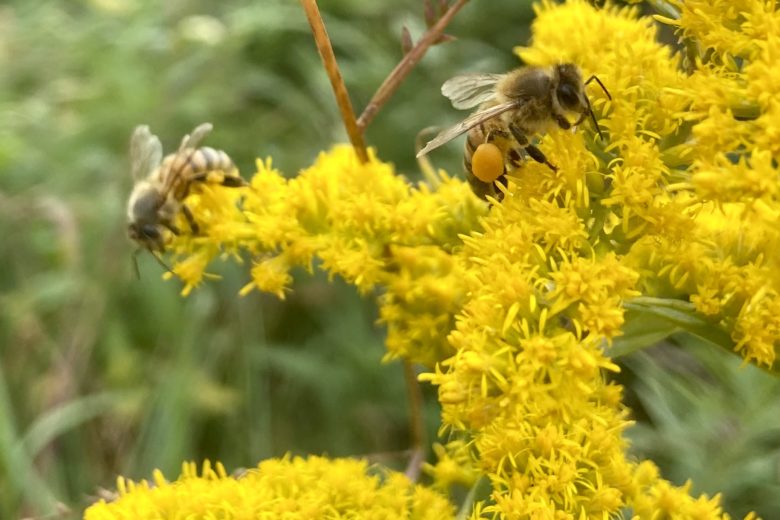In 1942, Kentucky officially adopted our state motto, “United We stand, Divided We Fall.” I just wonder if it was the ruckus stirred over the designation of our state flower which spurred the choice.
Before goldenrod, bluegrass (or Poa pratensis) had been Kentucky’s State Flower. The lush, dense, cool-season lawn grass is known for its beauty on the gently rolling limestone soils of central Kentucky. Surprisingly, the perennial hero’s most popular varieties are not native to Kentucky, but rather from Europe and northern Asia. The most common explanation is that European settlers of the 17th and 18th centuries incorporated the grass seed when establishing their homesteads. They saw the value of this sod-forming, palatable grass for grazing animals such as sheep and horses.
Despite our nickname as the Bluegrass State and its official adoption as the state flower in 1911, the United States War Department continued to use the trumpet vine as a symbol for the Kentucky militia for many years. Trumpet vine (Campsis radicans) is a native perennial with showy reddish-orange tubular blossoms much beloved by hummingbirds. The vines climb trees and scale manmade structures. Their spreading roots tunnel, silent and undetectable, until the sprouting elsewhere to ambush their next target. Chemical warfare (an herbicide) is about the only effective weapon in an arsenal against the trumpet vine.
But the State Federation of Women’s Clubs and various garden groups grew agitated and felt the federal government was pushing to decide Kentucky’s official state flower. They also argued that bluegrass didn’t adequately represent our diversified topography (I must guess the fact that bluegrass isn’t a flower was probably another issue). And so, the ladies lobbied for the goldenrod.
There are more than 30 species of goldenrod native to Kentucky. It is a perennial wildflower in the sunflower family, thriving in most soil types and almost any condition, attracting pollinators such as honey bees and butterflies which feed on the nectar and yellow pollen of the flowerheads. The tall, leggy plant is just beginning its golden hour in Kentucky, with full, radiant blooms peaking in August and September.
In 1926, Kentucky’s State Flower changed from blueish-green to gold, Solidago gigantea to be exact. It makes me love our flag (authorized in 1918) even more—that blue(grass) background and fellas shaking hands atop a wreath of goldenrod. Yes, united we stand, divided we fall—and victory to the feisty, little gardeners.
